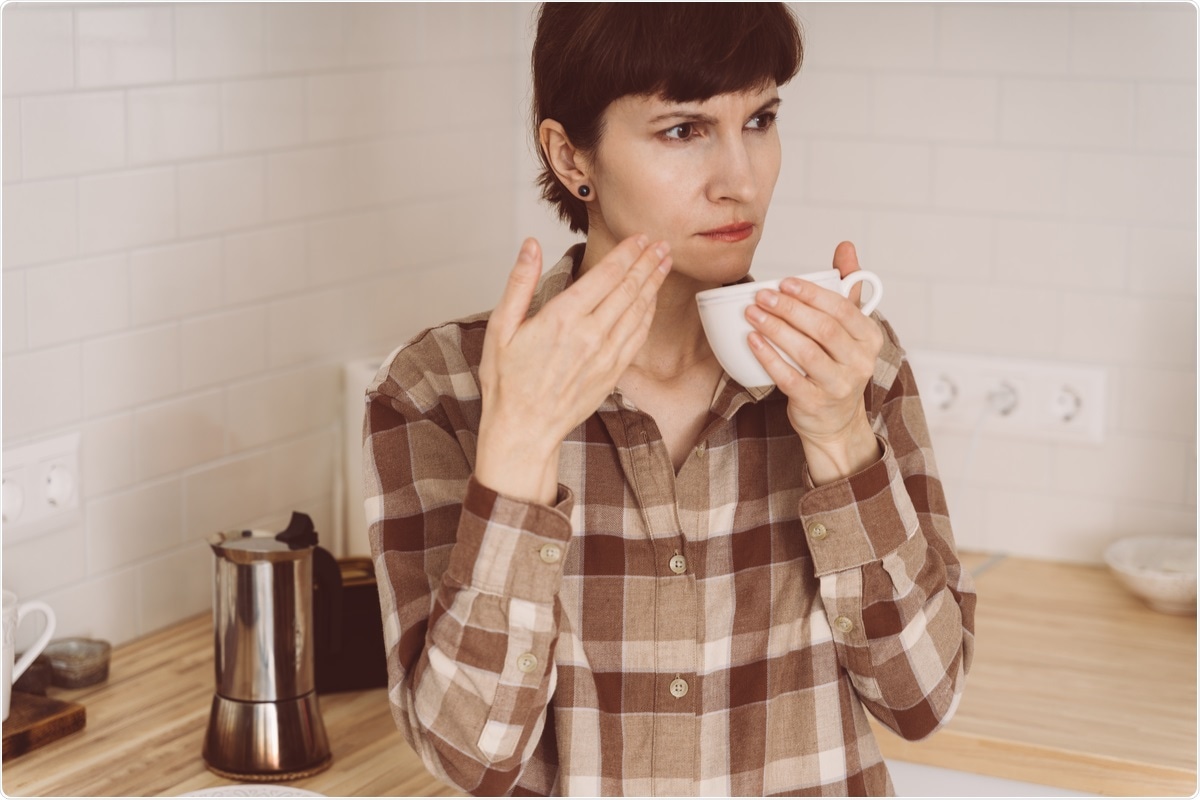Phantosmia, parosmia, and dysgeusia in COVID-19 patients

Altered smell and taste (olfactory and gustatory alterations) are among the most common symptoms of coronavirus disease 2019 (COVID-19), and previous studies have thoroughly investigated its quantitative aspects.
 Study: Phantosmia, Parosmia, and Dysgeusia Are Prolonged and Late-Onset Symptoms of COVID-19. Image Credit: Nata Bene/ Shutterstock
Study: Phantosmia, Parosmia, and Dysgeusia Are Prolonged and Late-Onset Symptoms of COVID-19. Image Credit: Nata Bene/ Shutterstock
In a study published in the Journal of Clinical Medicine, a team of researchers investigated qualitative aspects of olfactory and gustatory symptoms such as phantosmia, parosmia, and dysgeusia and their possible co-relation with the adaptive immune system. The researchers formulated two structured questionnaires at the median of 100 (Q1) and 244 (Q2) days to assess the subjective experience of these symptoms. Since COVID-19 is still a poorly explored disease, this survey helped them gather detailed information on symptoms unidentified so far.
There were 15 male and 29 female participants in the study, and all 44 of them tested positive for COVID-19 at the time of the study. They experienced several qualitative, quantitative, or a combination of both types of alterations during the acute COVID-19 illness. The qualitative symptoms included parosmia (alteration of smell), phantosmia (hallucination of smell), and dysgeusia (alteration of taste), and the quantitative symptoms included hyposmia, anosmia, ageusia, and hypogeusia.
Over 60% of participants reported altered taste and smell during acute COVID-19 illness
Overall, 30 out of 44 participants reported altered taste and smell during severe illness, and these alterations ceased within seven days in 26.7% of cases. The quantitative alterations were reported in 14 participants, qualitative aspects in six patients, while the remaining 10 had a combination of both. After a median of 100 days, only 25% of participants reported an ongoing alteration of taste and smell (one quantitative, seven qualitative, three quantitative and qualitative), while after a median of 244 days, 31.8% of participants (one quantitative, ten qualitative, three quantitative and qualitative) reported these ongoing alterations. For a median of 250 days, 22.7% of participants showed persistent alterations throughout the illness.
Occurrence of qualitative alterations was delayed in most cases
After a median of 244 days, four participants reported having phantosmia (1), phantosmia and dysgeusia (1), parosmia and dysgeusia (1), and just dysgeusia (1). Interestingly, all of these participants reported having these alterations right from the onset of illness (3 quantitative, 0 qualitative, one quantitative, and qualitative) but fully recovered after a median of 100 days. One participant who earlier reported having dysgeusia also developed parosmia. As far as taste alteration is concerned, 27.3% of participants reported that some taste qualities were more severely affected. The findings of six cases indicated that a combined alteration of more qualities occurred as much as the alteration of one quality.
Of the total nine phantosmia cases, only eight reported hallucinated smells as unpleasant, and four of them could recognize and describe these smells as – cigarette smoke, feces and foul, fire smoke and feces, and sauerkraut. In eight parosmia cases, participants reported a changed smell of perfume, disinfectant, feces and perfume, detergent, and bread and coffee, but only seven people perceived these as negative and nauseating. One participant smelled roasted chicken (1) in everything but did not mention having any negative effect on his well-being. Of 11 dysgeusia cases, only five participants lost their ability to differentiate tastes in mixed dishes. They described a bitter (1), a bitter aftertaste (1), salty (1), or saltless (2) taste of food, a burning sensation while eating (1), and a change in sweet dishes (3). In only four cases, participants reported changes in their food and drink preferences.
The researchers conducted psychophysical screening tests in Q1. The odor identification screening test results revealed that of the total 44 participants, nine had normosmia (score of 11-12), six were within the range of hyposmia (score of 7-10), and three were anosmic (score of 0-6). In the taste identification screening test, only 26 participants were able to identify all the four taste qualities (salt, sour, bitter, and sweet) correctly. They mentioned the quality ‘bitter’ six times, ‘salt’ 11 times, and ‘sour’ eight and ‘sweet’ three times.
To summarize, 68.2% of participants reported altered smell and taste, of which 25% reported qualitative alterations after 100 days and 31.8% after 244 days indicating that the COVID-19-induced qualitative alterations can persist for several months. Over 9% of participants, who showed no symptoms after 100 days, reported newly developed qualitative changes indicating that these can occur later after full recovery. When the immune response of the participants was investigated in correlation with the taste and smell alterations, results showed no correlation between the two during serological and T-cell analysis. In conclusion, this study emphasizes the need for similar studies with larger cohorts to investigate the taste and smell alterations in COVID-19 patients.
-
Sophia E. Schambeck, Claudia S. Crowell, Karolin I. Wagner, Elvira D’Ippolito, Teresa Burrell, Hrvoje Mijočević, Ulrike Protzer, Dirk H. Busch, Markus Gerhard, Holger Poppert, Henriette Beyer. Phantosmia, Parosmia, and Dysgeusia Are Prolonged and Late-Onset Symptoms of COVID-19. J. Clin. Med. 2021, 10, 5266. doi: https://doi.org/10.3390/jcm10225266 https://www.mdpi.com/2077-0383/10/22/5266
Posted in: Medical Science News | Medical Research News | Disease/Infection News
Tags: Anosmia, Bread, Cell, Cigarette, Coffee, Coronavirus, Coronavirus Disease COVID-19, Disinfectant, Dysgeusia, Food, Gustatory, Hallucination, Immune Response, Immune System, Medicine, T-Cell

Written by
Susha Cheriyedath
Susha has a Bachelor of Science (B.Sc.) degree in Chemistry and Master of Science (M.Sc) degree in Biochemistry from the University of Calicut, India. She always had a keen interest in medical and health science. As part of her masters degree, she specialized in Biochemistry, with an emphasis on Microbiology, Physiology, Biotechnology, and Nutrition. In her spare time, she loves to cook up a storm in the kitchen with her super-messy baking experiments.
Source: Read Full Article